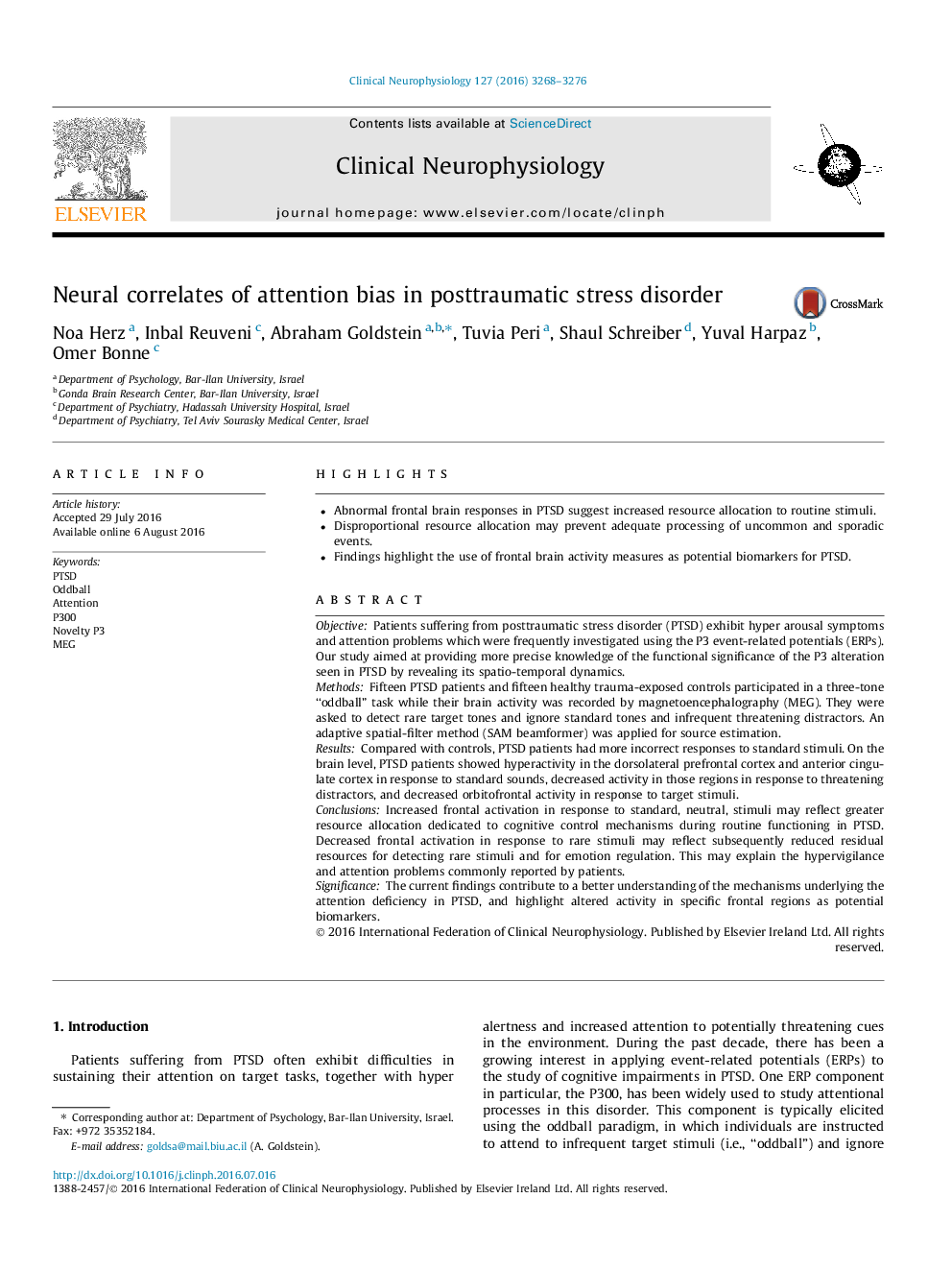| کد مقاله | کد نشریه | سال انتشار | مقاله انگلیسی | نسخه تمام متن |
|---|---|---|---|---|
| 5627875 | 1406357 | 2016 | 9 صفحه PDF | دانلود رایگان |
- Abnormal frontal brain responses in PTSD suggest increased resource allocation to routine stimuli.
- Disproportional resource allocation may prevent adequate processing of uncommon and sporadic events.
- Findings highlight the use of frontal brain activity measures as potential biomarkers for PTSD.
ObjectivePatients suffering from posttraumatic stress disorder (PTSD) exhibit hyper arousal symptoms and attention problems which were frequently investigated using the P3 event-related potentials (ERPs). Our study aimed at providing more precise knowledge of the functional significance of the P3 alteration seen in PTSD by revealing its spatio-temporal dynamics.MethodsFifteen PTSD patients and fifteen healthy trauma-exposed controls participated in a three-tone “oddball” task while their brain activity was recorded by magnetoencephalography (MEG). They were asked to detect rare target tones and ignore standard tones and infrequent threatening distractors. An adaptive spatial-filter method (SAM beamformer) was applied for source estimation.ResultsCompared with controls, PTSD patients had more incorrect responses to standard stimuli. On the brain level, PTSD patients showed hyperactivity in the dorsolateral prefrontal cortex and anterior cingulate cortex in response to standard sounds, decreased activity in those regions in response to threatening distractors, and decreased orbitofrontal activity in response to target stimuli.ConclusionsIncreased frontal activation in response to standard, neutral, stimuli may reflect greater resource allocation dedicated to cognitive control mechanisms during routine functioning in PTSD. Decreased frontal activation in response to rare stimuli may reflect subsequently reduced residual resources for detecting rare stimuli and for emotion regulation. This may explain the hypervigilance and attention problems commonly reported by patients.SignificanceThe current findings contribute to a better understanding of the mechanisms underlying the attention deficiency in PTSD, and highlight altered activity in specific frontal regions as potential biomarkers.
Journal: Clinical Neurophysiology - Volume 127, Issue 10, October 2016, Pages 3268-3276
